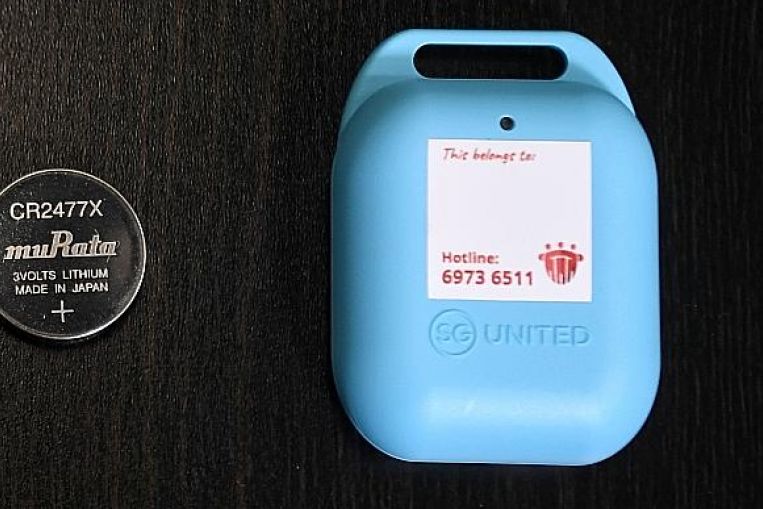The TraceTogether token is safe to use and transmits at a lower power than even mobile phones, said the Government on Saturday (May 15).
It was addressing a video making the rounds online last week suggesting the token exposes a user to a high level of radiation, ahead of compulsory SafeEntry check-ins using the TraceTogether app or token from Monday.
A post on Saturday morning on the Government’s fact-checking website Factually said that the token, which helps the authorities with Covid-19 contact tracing, uses Bluetooth low energy to send and receive data.
The token “transmits at a lower power than many consumer communications devices – such as mobile phones, Bluetooth headphones, speakers and smart watches”, said the post.
It added that the token has been tested by an independent laboratory and is “well within Singapore’s regulatory limits for short-range devices” and is “safe for everyday use”.
The post noted that there are strict limits on the transmission power of such devices, based on international standards and guidelines from the International Commission on Non-Ionising Radiation Protection. The commission is an independent international organisation recognised by the World Health Organisation.
Last week, a video clip surfaced online and on social media claiming to show the amount of electric and magnetic field emissions from the TraceTogether token.
The 2min 30sec clip shows a person using a radio frequency meter to measure the amount of radiation from the token.
When he brings the meter over the token, the maximum and peak readings on the meter spike, although the average reading is much lower.
When he covers the token with a “shielding fabric” to show what people can do about the radiation, the meter’s peak and average readings fall, although the maximum reading appears to be as high as before.
The clip does not compare readings for other electronic devices, such as mobile phones, with the token’s.
The Government Technology Agency, which helped to develop the token, urged the public yesterday not to be “misinformed by fake news”. “There is no concern with the radiation emitted from the token,” it said on Facebook, reiterating points from the Factually post.
STANDARD METHODS NEEDED TO MEASURE RADIATION
Associate Professor See Kye Yak from the Nanyang Technological University (NTU) said that using non-standard methods to measure electromagnetic radiation emitted from wireless devices, such as mobile phones, can produce a misleading reading.
He said the specific absorption rate is the best measurement to determine if radiation from such devices is harmful to human health.
This method measures the rate at which electromagnetic energy emitted by a wireless device is absorbed by the human body when the device is placed very close to the body.
Accurate testing for this rate requires a calibrated antenna, sophisticated instruments and a standardised test set-up, said Prof See, who is the director of NTU’s Electromagnetic Effects Research Laboratory.
He said a wireless Bluetooth device, like the TraceTogether token, has a relatively short transmission range of less than 10m. This contrasts with a mobile phone’s range of up to 100m.
“Therefore, the electromagnetic radiation level (of the token) is expected to be significantly lower than that of the mobile phone,” said Prof See.
GovTech said on May 7 that TraceTogether tokens have received the highest security label under a voluntary scheme that shows consumers how secure Internet-connected devices are against cyber-security threats.
The Cybersecurity Labelling scheme by the Cyber Security Agency of Singapore (CSA) has four rating levels. The highest Level 4 rating requires products to be sent for structured penetration tests conducted by CSA-approved third-party labs.
Tokens produced from Oct 13 last year will have the Level 4 label, including those made from April 1 this year.
While the TraceTogether tokens are not technically Internet-connected devices, the Level 4 label “means that the tokens are secure by design”, said GovTech in a Facebook post.
“Data stored in the devices cannot be accessed by unauthorised parties, giving you greater peace of mind,” it added.
Join ST’s Telegram channel here and get the latest breaking news delivered to you.
Source: Read Full Article
